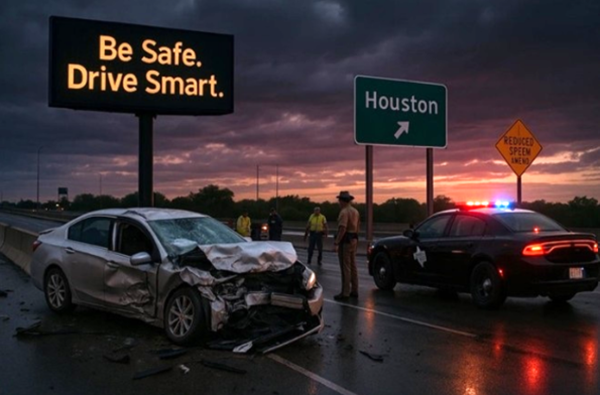Proposed Truck Speed Limit Rule Dropped Amid Deregulatory Push

We’ve seen firsthand the devastation caused when 80,000-pound trucks travel too fast
For nearly a decade, federal regulators have been debating whether to require large trucks to be equipped with electronic devices that limit their maximum speed. The idea seemed simple enough: limit the speed of big rigs, and you reduce the severity of truck accidents, save lives, and cut costs.
But in late July, the plan hit a dead end. The U.S. Department of Transportation, through the Federal Motor Carrier Safety Administration (FMCSA) and the National Highway Traffic Safety Administration (NHTSA), withdrew the proposal.
The reason? It would have wrested control from the states over speed limits, and there wasn’t enough hard data to justify the change.
This wasn’t just a matter of policy fine print. It was a clash over who gets to decide how fast trucks should travel on America’s highways, with deeper implications for how the federal government regulates transportation.
How did the speed limiter proposal begin?
The first version of the rule was introduced in 2016, backed by both the FMCSA and NHTSA. It targeted commercial vehicles weighing over 26,000 pounds, proposing that they be fitted with speed limiters set at either 60, 65, or 68 miles per hour.
The thinking was straightforward: lower speeds mean fewer high-impact crashes, which often have devastating consequences when an 80,000-pound truck is involved.
The plan was revived in 2022 with updated language, which reignited old debates. Supporters argued that mandatory speed limiters would protect drivers, reduce highway fatalities, and even help the environment through better fuel efficiency.
The agencies had numbers to support their claims. Their estimates suggested that a nationwide 65 mph cap could prevent 63 to 214 deaths each year. They also projected economic benefits for trucking companies, ranging from $209 million to $1.56 billion annually, in the form of savings from lower fuel use, reduced tire wear, and fewer crash-related expenses.
Why were the rules withdrawn?
The July 24 notice in the Federal Register made it clear that the proposals directly conflicted with the issue of state sovereignty. Under U.S. law, states have the authority to set speed limits on their own roads. Many states permit trucks to travel faster than 68 mph, particularly on rural interstate highways.
The proposed rules would have overridden those decisions. According to the notice, that created a “significant” conflict between federal and state authority. In effect, the speed limiter mandate would have stripped states of their ability to set what they consider to be safe speed limits for their roads.
The move also aligned with an executive order directing federal agencies to rescind regulations that are “unlawful or undermine the national interest.” In this case, DOT determined that imposing federal truck speed caps without sufficient legal footing and data would be both.
While the projected benefits looked promising on paper, the agencies admitted they didn’t have the full picture. They lacked enough reliable data to predict exactly how speed limiters would affect crash numbers or the overall economy. That uncertainty left the rule vulnerable. Without a clear, evidence-based case showing that the safety benefits outweighed the costs, DOT decided not to push it forward.
Another factor influencing the withdrawal was the rapid advancement of truck safety technology. Many newer commercial vehicles are already equipped with crash avoidance systems, such as automatic emergency braking and forward collision warning.
These systems can detect potential collisions and either alert the driver or automatically apply the brakes. FMCSA and NHTSA acknowledged that such features may already be preventing some of the crashes that speed limiters were intended to reduce.
What is the public and industry reaction to this decision?
Safety groups largely backed the idea, some even calling for lower limits. However, many trucking companies are concerned about lost efficiency, especially when hauling time-sensitive freight. Independent owner-operators argued that speed limiters could create dangerous speed differences between trucks and cars, potentially leading to more truck accidents rather than fewer.
The American Trucking Associations struck a more measured tone. COO Dan Horvath said the decision was “expected” and in line with the administration’s broader deregulatory approach. “We believe USDOT can successfully balance deregulatory actions while enforcing sensible regulations that are on the books, in line with its safety mission,” said Horvath.
What does this mean for future transportation policy?
The end of the speed limiter proposal doesn’t mean the conversation is over. It’s a sign of how transportation policy is shifting under the current administration. That means a reduced appetite for sweeping federal mandates and a greater emphasis on state control and market-led safety solutions.
For now, states will continue to set their own truck speed limits, and safety gains may come more from technological innovation than from top-down regulation. But advocates for uniform national standards aren’t going away. They may propose new initiatives in the future, especially if more comprehensive crash data becomes available.
The tension between safety regulation and operational freedom isn’t new, and it won’t disappear anytime soon. The trucking industry operates in all 50 states, but the rules of the road are still shaped heavily by local control.
Truckers won’t see a federal rule limiting their top speed. However, the issues that sparked the proposal (e.g., highway safety, crash prevention, and fuel efficiency) remain on the table. As long as 80,000-pound trucks share the road with passenger vehicles, the conversation about how to keep everyone safe will continue to move forward.
Injured in a truck accident?
Let our Houston law firm fight for maximum compensation
At Smith & Hassler, our Houston truck accident lawyers are well-versed in the tactics employed by trucking companies and have been advocating for injured motorists for over 30 years. We know how to investigate complicated truck accidents, identify every liable party, and build a strong case for the full compensation you deserve.
When the stakes are high, you need a law firm with the skill, resources, and proven track record to go head-to-head with powerful trucking corporations. Our team proudly serves clients in Houston, Harris County, and throughout the state of Texas. When you schedule your free consultation, you’ll get straightforward answers and an honest assessment of your case.
There’s no obligation or pressure; just a confidential conversation with an attorney who understands what you’re going through and how to fight for your best interests. You can also rest easy knowing we work on a contingency fee basis, which means you pay nothing upfront and we only get paid if we win your case.
If you’ve been injured in a crash involving a large truck, contact us today to schedule your free case evaluation. Evidence can disappear quickly after a truck accident, so the sooner you reach out, the sooner we can start protecting your rights and pursuing the maximum compensation you’re entitled to.
“Smith and Hassler law firm has been more than amazing! They go above and beyond what their title is. They truly care about you as an individual and what you are going through, not just a paycheck to them.” – J.S., ⭐⭐⭐⭐⭐













